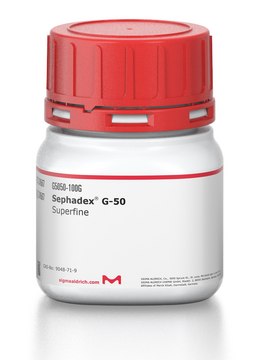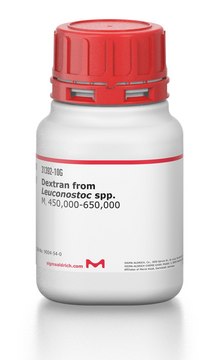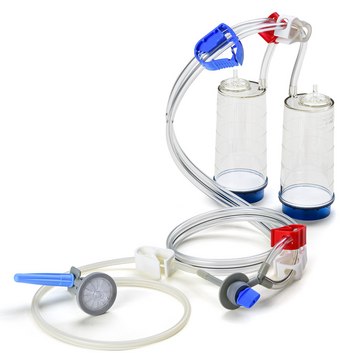F0652
Anti-Factor IX antibody produced in rabbit
IgG fraction of antiserum, buffered aqueous solution
Sign Into View Organizational & Contract Pricing
All Photos(1)
Recommended Products
biological source
rabbit
Quality Level
conjugate
unconjugated
antibody form
IgG fraction of antiserum
antibody product type
primary antibodies
clone
polyclonal
form
buffered aqueous solution
species reactivity
human
technique(s)
dot blot: 1:8,000
indirect ELISA: 1:5,000
western blot: 1:3,000 using using reduced and non-reduced human plasma blots
UniProt accession no.
shipped in
dry ice
storage temp.
−20°C
target post-translational modification
unmodified
Gene Information
human ... F9(2158)
General description
Factor IX is a 55 kDa, single chain, vitamin K-dependent plasma zymogen. Factor IX is synthesized in liver parenchymal cells and requires a post-translational, vitamin K-dependent, modification in order to become a mature plasma zymogen. Factor IX concentration in human plasma ranges between 2.5-5 mg/ml and its half-life is ~24 hr. Human factor IX gene is about 40 kb in size and is localized at the distal end of the X-chromosome.
Four and a half LIM domains protein 1 is a protein encoded by the FHL1 gene in humans and is located on human chromosome Xq27.2. Factor IX (or Christmas factor) is one of the serine proteases of the coagulation system. It belongs to peptidase family S1 and its deficiency causes hemophilia B. The proteins belong to a novel family of LIM proteins that are expressed in human skeletal muscle. FHL1 gene is related to carcinogenesis and its inactivation is a frequent event during oral carcinogenesis. FHL1 downregulation in oral squamous cell carcinoma (OSCC) occurs through DNA methylation of the promoter region rather than histone deacetylation or mutation.
Specificity
Specifically reacts with human factor IX. The antibody detects human factor IX in both reduced and non-reduced normal human plasma.
Immunogen
human factor IX
Application
Anti-Factor IX antibody produced in rabbit has been used in immunoblotting and Gla enzyme-linked immunosorbent assay (ELISA).
Biochem/physiol Actions
Hereditary deficiencies or dysfunctions of factor IX cause hemophilia B or "Christmas Disease"(the surname of the first family described).A disulfide bond in factor IX connects the N-terminal sequence (light chain) of factor IX to the C-terminal sequence (heavy chain).Factor IX possesses higher sensitivity, hence even tiny amounts of residual intact can be visualized by F0652.
Physical form
Solution in 0.01 M phosphate buffered saline, pH 7.4, containing 15 mM sodium azide
Disclaimer
Unless otherwise stated in our catalog or other company documentation accompanying the product(s), our products are intended for research use only and are not to be used for any other purpose, which includes but is not limited to, unauthorized commercial uses, in vitro diagnostic uses, ex vivo or in vivo therapeutic uses or any type of consumption or application to humans or animals.
WGK
nwg
Flash Point(F)
Not applicable
Flash Point(C)
Not applicable
Regulatory Information
新产品
Certificates of Analysis (COA)
Search for Certificates of Analysis (COA) by entering the products Lot/Batch Number. Lot and Batch Numbers can be found on a product’s label following the words ‘Lot’ or ‘Batch’.
Already Own This Product?
Find documentation for the products that you have recently purchased in the Document Library.
An intragenic deletion of the factor IX gene in a family with hemophilia B.
Chen SH, et al.
The Journal of Clinical Investigation, 76(6), 2161-2161 (1985)
Oguz Top et al.
Communications biology, 4(1), 964-964 (2021-08-14)
Production of biopharmaceuticals relies on the expression of mammalian cDNAs in host organisms. Here we show that the expression of a human cDNA in the moss Physcomitrium patens generates the expected full-length and four additional transcripts due to unexpected splicing.
Hepatocyte Is a Sole Cell Type Responsible for the Production of Coagulation Factor IX In Vivo
Tatsumi K, et al.
Cell medicine, 3(1-3), 25-25 (2012)
Coagulation factor IX for hemophilia B therapy
Orlova NA, et al.
Acta Naturae (2012)
Factor IX deficiency (Christmas disease)
Philip J, et al.
Medical Journal, Armed Forces India, 68(4), 379-379 (2012)
Our team of scientists has experience in all areas of research including Life Science, Material Science, Chemical Synthesis, Chromatography, Analytical and many others.
Contact Technical Service





